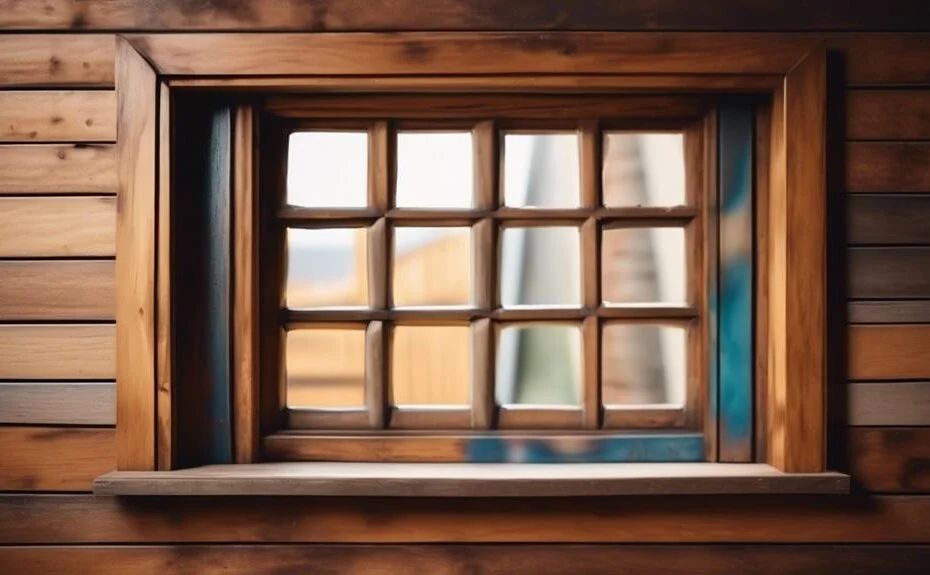When embarking on a home improvement project, it's important to plan the sequence of tasks for optimal results. One common question is whether to paint woodwork before walls.
Let's explore the benefits and potential pitfalls of this approach. By understanding proper preparation techniques and common mistakes to avoid, you'll be equipped to make the best decision for your project.
So, let's dive into the intriguing world of woodwork painting and uncover the best course of action.
Key Takeaways
- Painting woodwork first allows for enhanced precision and a smoother finish on the woodwork.
- Proper preparation, including cleaning, sanding, and priming, is crucial for a successful woodwork paint job.
- Using high-quality brushes or rollers and applying thin and even coats will result in a professional-looking finish.
- It is important to avoid common mistakes such as skipping prep work, using low-quality tools, and rushing the drying process.
Benefits of Painting Woodwork First
Painting woodwork before walls offers numerous advantages, including enhanced precision, a smoother finish, and better overall project management. By prioritizing woodwork painting, craftsmen can ensure that every intricate detail and corner of the wood is carefully coated, resulting in a more precise and professional-looking finish.
This technique allows for better control over brush strokes and paint application, minimizing the risk of drips or uneven coverage. Moreover, starting with woodwork first enables the painter to work with more ease and freedom, without the constraints of protecting already painted walls.
This approach also streamlines the project management process, as it allows for efficient scheduling and completion of different tasks. Ultimately, painting woodwork before walls is a technique that yields superior results and ensures a successful painting project.
Tips for a Successful Woodwork Paint Job
When aiming for a successful woodwork paint job, it is crucial to adhere to specific tips and techniques that will ensure a professional and flawless finish. Here are some key points to consider:
- Woodwork paint color selection: Choose a color that complements the overall aesthetic of the space and enhances the natural beauty of the woodwork.
- Surface preparation: Properly clean and sand the woodwork to create a smooth and even surface for the paint to adhere to.
- Priming: Apply a primer specifically designed for woodwork to improve paint adhesion and enhance durability.
- Brush or roller selection: Use high-quality brushes or rollers that are suitable for the type of paint being used to achieve a smooth and even application.
- Technique: Apply the paint in thin and even coats, working with the grain of the wood and avoiding drips or brush marks.
How to Prepare Woodwork for Painting

To ensure a flawless and long-lasting paint job on woodwork, proper preparation is essential. Before painting woodwork, it is crucial to follow a few key steps to achieve the best results.
Firstly, thoroughly clean the woodwork surface to remove any dirt, dust, or grease.
Sand the woodwork lightly to create a smooth and even surface for the paint to adhere to.
Fill any cracks, holes, or imperfections with a suitable wood filler and allow it to dry before sanding it down.
Next, apply a primer specifically designed for wood surfaces to ensure proper adhesion of the paint.
Finally, choose the right paint for woodwork, such as an enamel or latex paint, that provides durability and easy maintenance.
Common Mistakes to Avoid When Painting Woodwork
Properly preparing the woodwork surface is crucial to achieving a flawless and long-lasting paint job. Avoiding common mistakes is essential for professional results. To help you achieve a successful woodwork paint job, here are five tips to avoid common mistakes:
- Skipping the prep work: Neglecting to properly clean, sand, and prime the woodwork can result in poor adhesion and an uneven finish.
- Not using the right tools: Using low-quality brushes or rollers can lead to streaks, brush marks, and an inconsistent paint application.
- Rushing the drying process: Failing to allow sufficient drying time between coats can cause the paint to peel, crack, or bubble.
- Overloading the brush: Applying too much paint at once can result in drips, runs, and an uneven appearance.
- Ignoring proper ventilation: Inadequate ventilation can prolong drying time, affect paint adhesion, and result in a strong odor.
Frequently Asked Questions
What Are the Different Types of Paint Finishes That Can Be Used on Woodwork?
There are several different types of paint finishes that can be used on woodwork, each with their own pros and cons. Some common options include matte, satin, semi-gloss, and high-gloss finishes. Choosing the right finish depends on factors such as desired aesthetic, durability, and ease of maintenance.
Can I Use the Same Paint for Both the Woodwork and the Walls?
Using the same paint for woodwork and walls can be done, but there are pros and cons to consider. Painting woodwork before walls allows for easier touch-ups, but it may require additional protection for the wood.
Should I Remove Old Paint From Woodwork Before Applying a New Coat?
When painting woodwork, it is essential to consider whether or not to sand the surface before applying a new coat of paint. Additionally, using a primer on the woodwork can help achieve better adhesion and a smoother finish.
Can I Paint Woodwork Before It Has Fully Dried or Cured?
When considering painting woodwork before walls, it is important to follow proper painting techniques. Allow the woodwork to fully dry and cure before painting to ensure optimal results and durability.
What Is the Best Way to Clean and Maintain Painted Woodwork?
To maintain the pristine beauty of painted woodwork, it is essential to re-paint it periodically, depending on wear and tear. Avoid common mistakes such as using harsh chemicals or abrasive materials when cleaning, to ensure its longevity.
Conclusion
In conclusion, painting woodwork before walls offers several benefits. One of these benefits is ease of access. When you paint the woodwork before the walls, you have a clear and unobstructed view of the woodwork. This allows you to easily reach all areas and ensure that every surface is properly painted.
Another benefit is avoiding paint splatters on freshly painted walls. When you paint the walls before the woodwork, there is a higher risk of accidentally getting paint splatters on the walls. This can be frustrating and time-consuming to fix, as you would need to touch up the walls after painting the woodwork. By painting the woodwork first, you can avoid this issue altogether and have a neater, more professional-looking finish.
By following the proper preparation techniques and avoiding common mistakes, you can achieve a successful woodwork paint job. Make sure to clean and sand the woodwork before painting, and use high-quality primer and paint. Take your time and pay attention to detail for the best results.
So, before you start painting your walls, consider giving your woodwork a fresh coat of paint first. This will not only make your woodwork look better but also make the overall painting process easier and more efficient.




